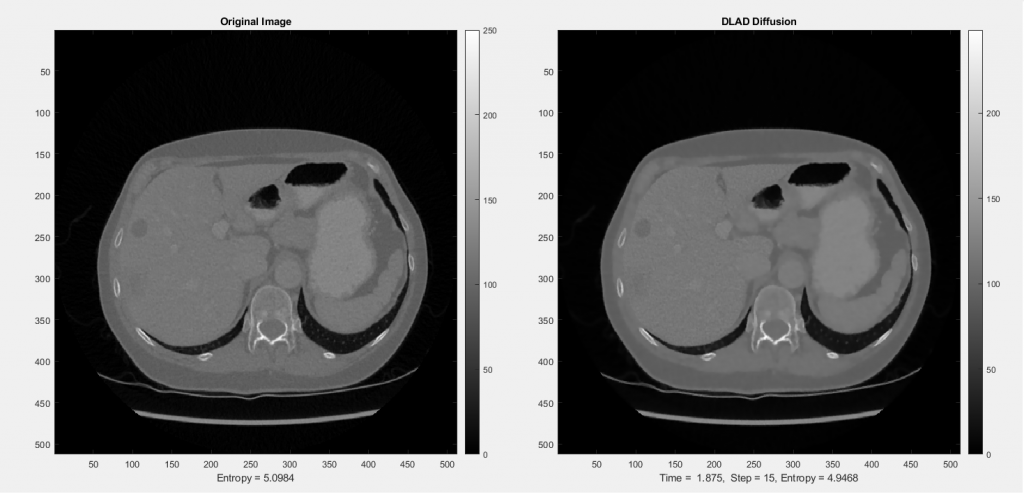
Chương trình mô phỏng
DLAD: Image Entropy Reduction via Anisotropic Diffusion Steered by Probability Map from CNNs

Medical images are often very large and medical image compression is important in teleradiology and teleinterventions. Medial image compression is challenging due to the quality of the images should remain sufficient for medical purpose. The lossless compression methods do not degrade the quality of the image, however their compression ratios are often very low.
This is a demo source code of Deep Learning Anisotropic Diffusion method (DLAD) in which we perform our image processing method to reduce entropy of an image by removing unnecessary information in the image.
The method, DLAD, uses a probability map extracted from a CNNs for highlighting the organ of interest; this probability map guides an anisotropic diffusion filter that smooths the image except at the location of the organ of interest. By this way, the entropy of the diffused image is reduced while the information of the region of interest is preserved. Subsequently, any compression method can be applied on the diffused image, and achieved a better compression ratio. Here, we demonstrate the method on a 2D CT image of the liver.
The details of the method is described in the paper:
Luu, H. M., van Walsum, T., Franklin, D., Pham, P. C., Vu, L. D., Moelker, A., … & Trung, N. L. (2021). Effciently Compressing 3D Medical Images for Teleinterventions via CNNs and Anisotropic Diffusion. Medical Physics.
The demo source code was written and tested using MATLAB 2018, based on an open source code written by Frederico D’Almeida.
You are free to use the source code only for research and education purposes. If you find it helpful for your research, please cite our paper!
You can download the demo source code here.
Requirements:
– Matlab 2018 with Image processing toolbox installed
– A 2D image and the probability map image of the object of interest. For a liver probability map extraction method using CNNs, you can find it here.
Contact: halm@vnu.edu.vn



